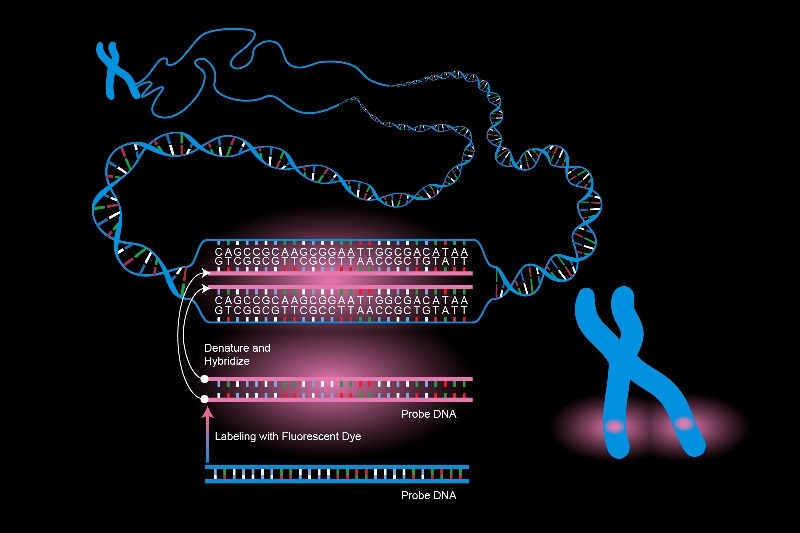Fluorescence in Situ Hybridization or FISH as it is popularly known could be a scientific technique implemented by experts to understand genetic disorders. Since its beginning, this method remains very famous finding genetic disorders just after conception to facilitate their cure. Really, the advancement during this technique can make it effective against finding haematological malignancies and solid tumours too.
So how exactly does it do that?
Since the medical information on this process would be better described in lots of books and journals, the fundamental idea of this method is fairly simpler. FISH or Fluorescence in Situ Hybridization may be used by searching within the cell reproduction cycle. In this cycle, the main focus on searching within the nuclei interface to place any genetic abnormalities. Before using this method, the genetic experts isolate segments of DNA or RNA, purify them then start situation study upon a man-made probe having a similar genetic foundation. In route, fluorescent tags are widely-used to label and isolate different strands. For this reason similarity in chromosome structure, this probe attracts similar chromosomes which makes it simpler for the doctors to understand the fault that is effect on the genetic make-up of those.
Why FISH increases results?

Genetics offers several types of ways of identify genetic defects. However, Fluorescence in Situ Hybridization remains probably the most used options. It is because the flexibility within the procedure and the way it’ll uncover the problems more precisely. Additionally, FISH is quicker than many of the other techniques that doctors are known to use. Also, unlike another techniques, usage of FISH techniques isn’t limited to cells that positively divide. Genetic experts also have the FISH technique on non-dividing cells to understand the faulty chromosomes.
Knowing the pros and cons!
We’ve already mentioned that Fluorescence in Situ Hybridization is loaded with a lot of benefits within the traditional laboratory procedures. Most of them are the opportunity to review cells in their natural habitat furthermore to searching within the exact composition within the cells. It will help with getting ever better accurate results. You may also utilize the FISH methods for study cells produced from bone marrow. However, there’s a substantial problem with the Fluorescence in Situ Hybridization process featuring its extended time connected with preparing the probes needed to make use of the procedure. Inside the finish, specific DNA strands need to be identified and accordingly the succession within the probe is ready before implementation.
You may also like
-
Proactive Sourcing Through Embedded Talent: Building Talent Pipelines that Work
-
What accessibility features help disabled patients use a prescription online?
-
How To Choose From The Top Universities In The UK: A 2025 Guide For Global Students
-
Craft Your Resume Using Word Resume Templates: Make Your First Impression Count
-
Deep Dive into Secure Multi-Tenant Architectures for SaaS Platforms
 Proactive Sourcing Through Embedded Talent: Building Talent Pipelines that Work
Proactive Sourcing Through Embedded Talent: Building Talent Pipelines that Work  What accessibility features help disabled patients use a prescription online?
What accessibility features help disabled patients use a prescription online?  How To Choose From The Top Universities In The UK: A 2025 Guide For Global Students
How To Choose From The Top Universities In The UK: A 2025 Guide For Global Students 

